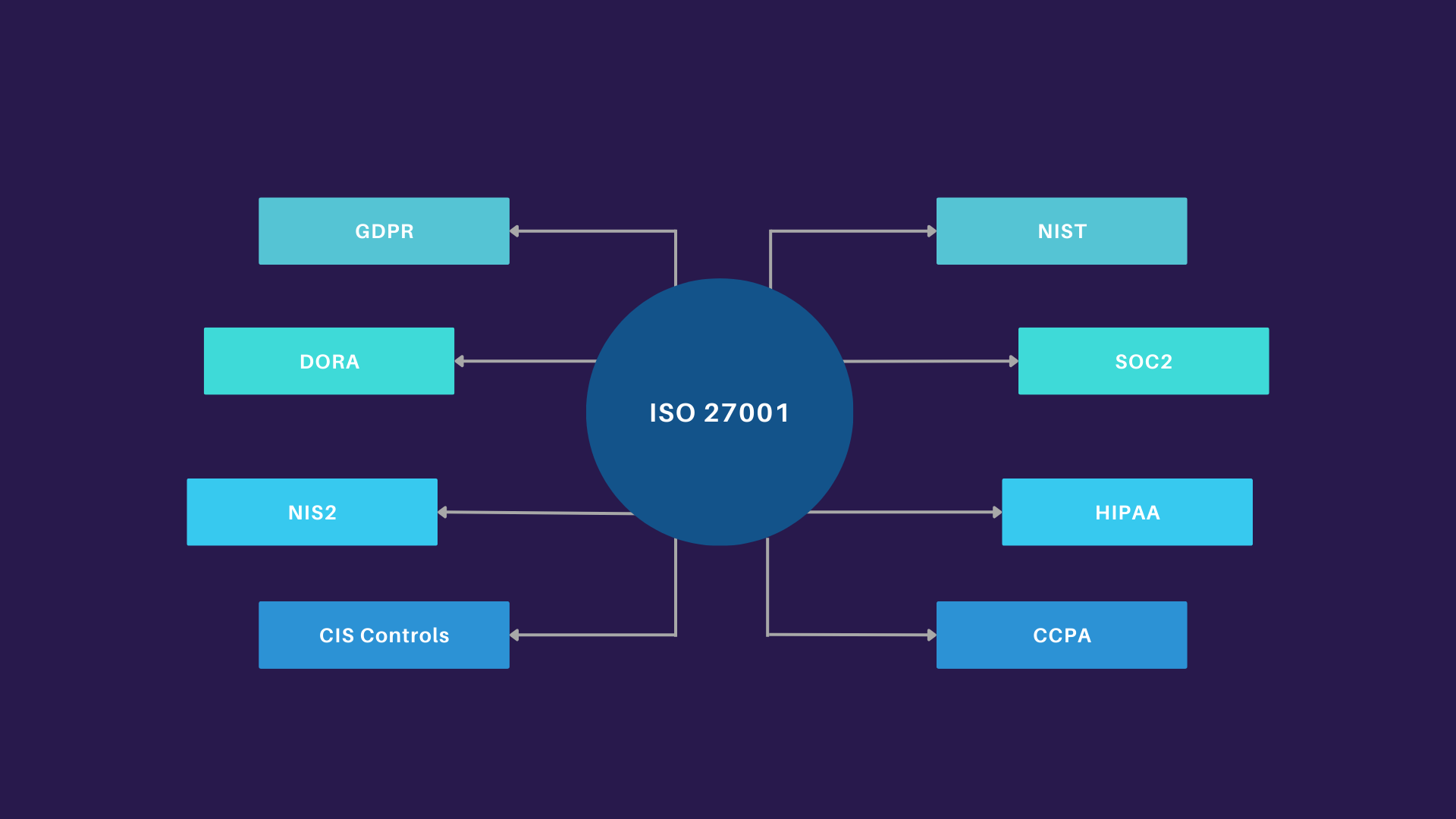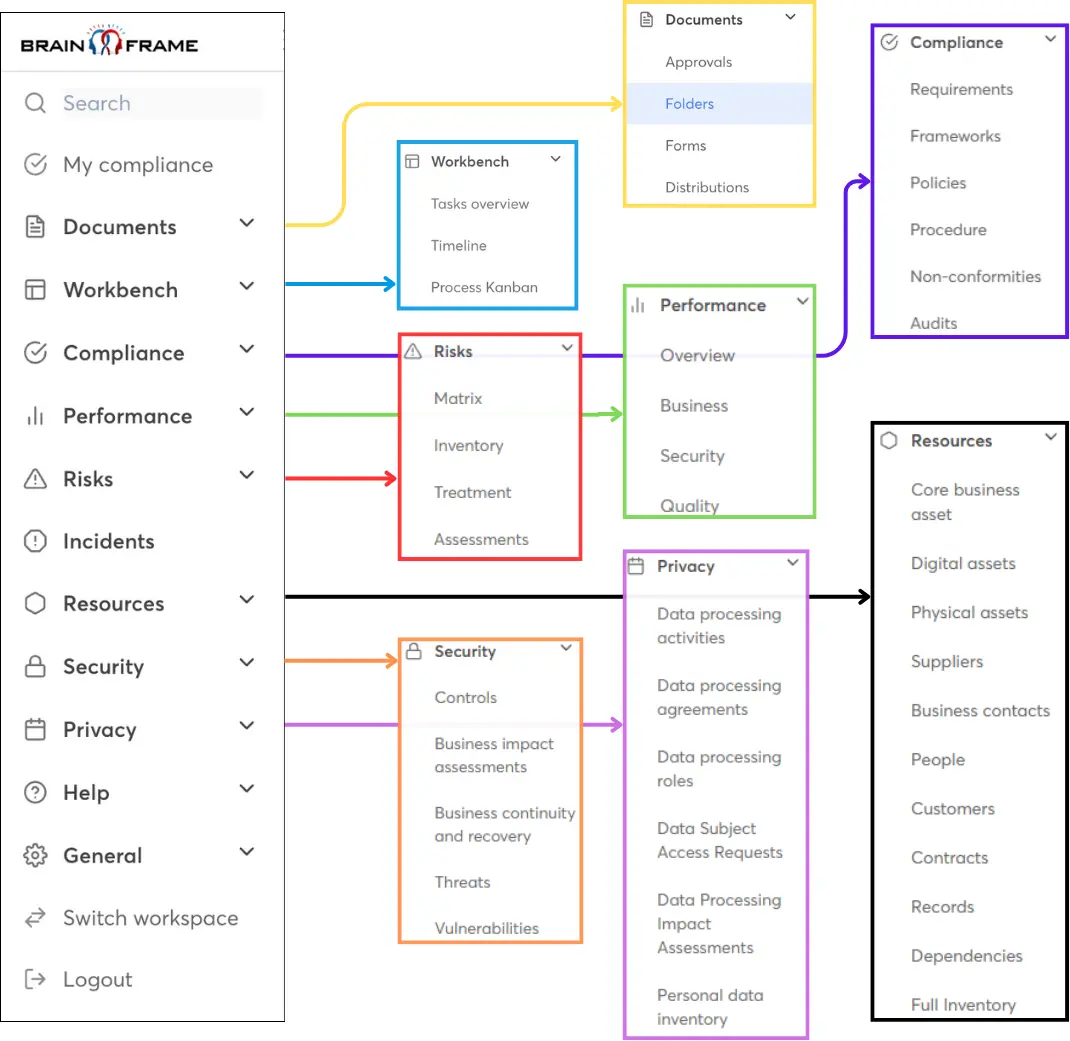The Enduring Relevance of ISO 27001
ISO 27001 has been around for a while, and unlike many security trends that come and go, it’s only become more valuable over time. Cyberthreats became more complex, regulations related information security have multiplied, but ISO 27001 is still the gold standard of Information Security Management Systems.
At its core, ISO 27001 is a framework that helps organizations manage the security of information in a structured, repeatable way. Unlike some compliance checklists that focus on ticking boxes, ISO 27001 focuses on building a culture of continuous risk management. And that’s exactly what makes it powerful.
Here’s why it still matters today:
- It’s globally recognized – Whether you’re operating in Europe, the US, or Asia, ISO 27001 has credibility with clients, partners, and regulators.
- It’s adaptable – From startups to multinationals, the framework scales with the size and complexity of your business.
- It’s proactive – Instead of reacting to incidents, it helps you anticipate and reduce risks before they turn into real problems.
- It builds trust – Showing you’ve been certified (or are working toward it) is a strong signal to customers that you care about their data.
For example, a healthcare SaaS startup preparing to land its first enterprise client. That client might require some sort of security assurance. ISO 27001 gives the startup a language and structure to demonstrate maturity—even if it’s still growing fast.
In short, ISO 27001 isn't just about compliance—it's about resilience. And with the right mindset and tools, it can become a competitive advantage rather than a burden.
Core Principles and What ISO 27001 Actually Requires
ISO 27001 can seem intimidating at first glance. There’s a lot of terminology, controls, and documentation involved. But in reality, it’s a straightforward idea: identify the risks to your information and do something about them in a structured, consistent way.
The standard is built around a few key principles:
- Risk-based thinking – Instead of blindly applying controls, you assess where your real threats are (e.g. customer data, critical systems) and focus your efforts there.
- Management commitment – ISO 27001 isn’t an IT project. Leadership needs to be involved in setting the direction and supporting the effort.
- Continuous improvement – The goal isn’t to be perfect on day one. The standard encourages learning from incidents, audits, and changes in your business to keep evolving.
- Documentation and accountability – It’s not enough to say you’re secure—you have to show it. That includes maintaining policies, records, and evidence that your controls are in place and working.
Here’s what you actually need to do to align with ISO 27001:
- Define your scope – Identify which parts of the business and systems are covered by your ISMS.
- Gain leadership support – Ensure top management is involved and committed to the ISMS.
- Set information security objectives – Define measurable goals aligned with business needs.
- Perform a risk assessment and treatment – Identify risks, determine how to handle them, and select appropriate controls.
- Document your Statement of Applicability (SoA) – Justify which controls are in place and why.
- Establish policies and controls – Cover everything from access control to incident response.
- Implement risk treatments – Put in place measures to reduce risk to an acceptable level.
- Train your staff and raise awareness – Ensure everyone understands their role in keeping information secure.
- Monitor, audit, and review – Regularly assess the effectiveness of the ISMS and improve it over time.
- Take corrective actions when needed – Address issues found in audits or incidents and prevent them from recurring.
For example, a company that relies heavily on remote work. A risk assessment might highlight unsecured home networks or weak personal devices. ISO 27001 gives you a framework to introduce VPNs, enforce multi-factor authentication, and make sure staff are trained—not just reactively, but as part of a managed system.
It’s not about perfection—it’s about being deliberate, consistent, and ready to adapt.
Mapping ISO 27001 to Regulations, Directives, and Frameworks
One of the biggest strengths of ISO 27001 is how well it connects with other security frameworks and regulatory requirements. Instead of juggling ten different standards, ISO 27001 gives you a structured foundation that overlaps with most of them. That means less duplication, more consistency, and a much easier time when auditors—or regulators—come knocking.
Here’s how it aligns with key frameworks and laws:
- NIS2 Directive – Emphasizes risk management, supply chain security, and incident handling—all of which are baked into ISO 27001’s requirements and Annex A controls.
- DORA (Digital Operational Resilience Act) – ISO 27001 helps financial sector companies implement consistent risk assessments, response plans, and operational continuity.
- NIST Cybersecurity Framework – ISO 27001 shares the same core goals: identify, protect, detect, respond, and recover. Many of the practices overlap, especially around risk and governance.
- CIS Controls (v8) – ISO 27001 provides the management system; CIS offers a prioritized list of technical controls. Used together, they cover both strategy and implementation.
📌 Why this alignment matters:
- You build once and map many times.
- Internal teams can focus on improving security instead of duplicating documents.
- Auditors and external assessors are more likely to recognize and trust ISO 27001 practices.
- It makes future compliance efforts (like when new laws are introduced) far less painful.
Take a tech company with ISO 27001 already in place: they can plug in CIS Controls for technical depth, refer to NIST for guidance, and meet NIS2 requirements with minimal added work. It’s a smarter, more scalable way to manage compliance.
Instead of chasing every new regulation, you create a strong backbone—and let everything else plug into it.

How Brainframe Makes ISO 27001 Implementation Practical
ISO 27001 sounds great on paper. But actually putting it into practice can be overwhelming. Policies, risk assessments, asset inventories, training, audits… it’s a lot to manage, especially if you’re a smaller team or don’t have a dedicated compliance department.
That’s exactly where Brainframe comes in. It takes the heavy lifting out of ISO 27001 and turns it into a clear, guided process you can actually follow. Whether you’re starting from scratch or trying to tighten up an existing ISMS, the platform gives you structure.
Here’s how Brainframe helps:
- Measure your compliance based on the controls you already have – Brainframe assesses your current setup and shows you where you’re falling short.
- Audit-ready documentation – Keep all your policies, records, and decisions in one place. You’ll always have version-controlled evidence ready for internal or external audits.
- Vendor and access management – Easily track third-party risks, roles, and access levels—important for ISO 27001, and even more important under NIS2 and DORA.
- Integrations that match your workflow – Sync with tools like Asana, Jira, Confluence, and Monday.com to keep everything aligned with how your teams actually work.
For example, let’s say you’re preparing for your first internal audit. With Brainframe, you can generate an audit trail of your risk assessments, decisions, and improvements—all in just a few clicks. It’s all there, ready to show.
ISO 27001 doesn’t have to be a mountain. With Brainframe, it’s more like a guided hike—with signposts, shortcuts, and a clear path to the top.
Common Challenges and How to Overcome Them
Implementing ISO 27001 isn’t easy—and anyone who tells you otherwise hasn’t done it. Even motivated teams can run into roadblocks, especially early on. But most of these challenges are predictable and solvable once you know where to look.
Here are a few of the most common pain points:
-
Lack of management support
If leadership sees ISO 27001 as a checkbox exercise or just "an IT thing," the project will stall. You need buy-in from the top, and that usually comes by connecting security to real business goals. -
Overcomplicated documentation
Some teams fall into the trap of trying to document everything to the smallest detail. The result? A mess no one reads. Focus on clarity and relevance. Your policies should reflect how your company actually operates—not what a textbook says. -
Treating it like a one-time project
ISO 27001 is not a finish line. It’s a cycle. Companies that get certified and then forget about it often fall behind by the time the next audit rolls around. Continuous improvement is part of the deal, and part of the value. -
Getting stuck on manual risk assessments
An ISMS can feel abstract. People don’t always know where to start or how detailed to be. A platform like Brainframe simplifies this by providing you all the tools needed for a smooth implementation.
⚠️ Quick “what not to do” list:
- Don’t copy someone else’s policies without tailoring them.
- Don’t assign one person to “own” everything—it’s a shared responsibility.
- Don’t wait until audit season to start collecting evidence.
Everyone hits bumps in the road. The key is not to be perfect from day one, but to build a process that matures over time—one that your team can actually stick to.
